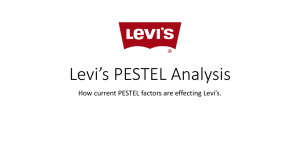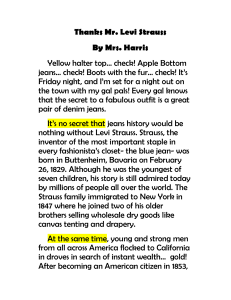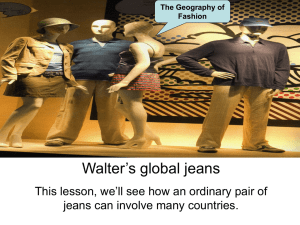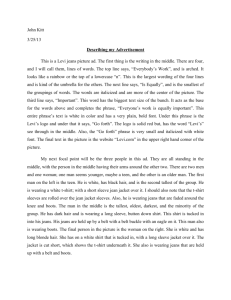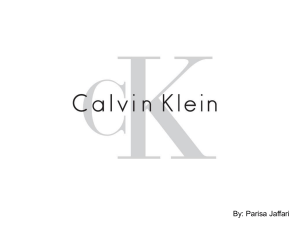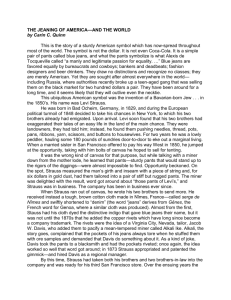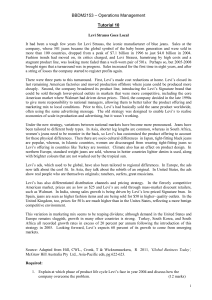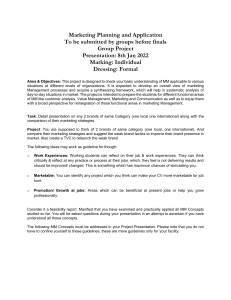Marketing Has Many Tools: The Marketing Mix
advertisement
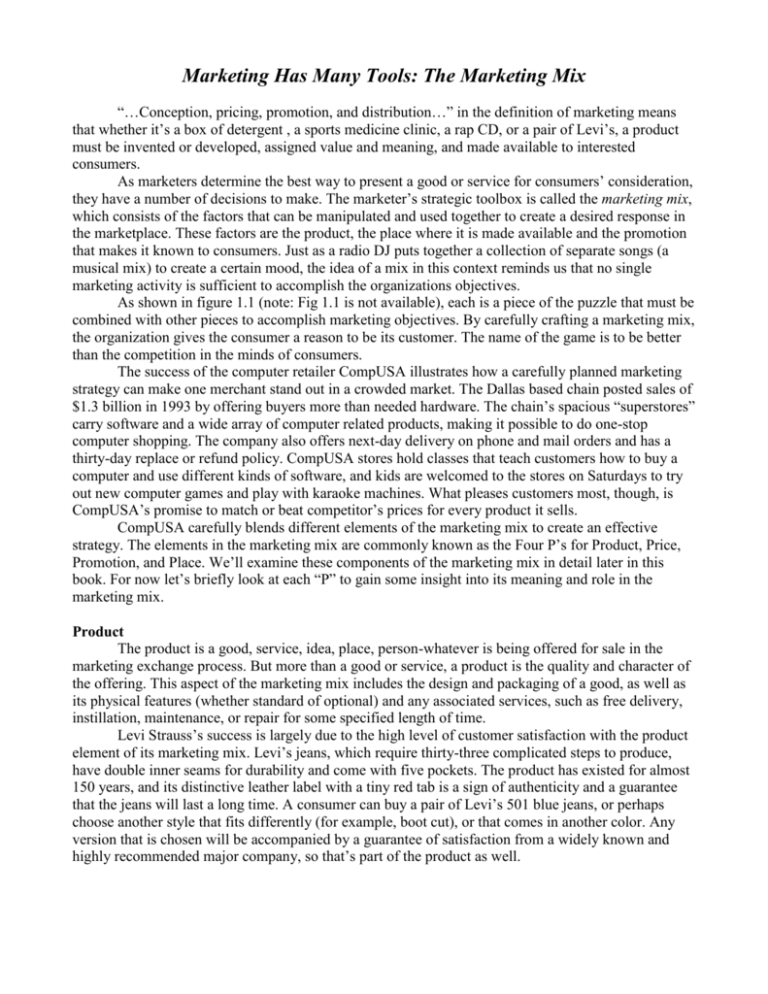
Marketing Has Many Tools: The Marketing Mix “…Conception, pricing, promotion, and distribution…” in the definition of marketing means that whether it’s a box of detergent , a sports medicine clinic, a rap CD, or a pair of Levi’s, a product must be invented or developed, assigned value and meaning, and made available to interested consumers. As marketers determine the best way to present a good or service for consumers’ consideration, they have a number of decisions to make. The marketer’s strategic toolbox is called the marketing mix, which consists of the factors that can be manipulated and used together to create a desired response in the marketplace. These factors are the product, the place where it is made available and the promotion that makes it known to consumers. Just as a radio DJ puts together a collection of separate songs (a musical mix) to create a certain mood, the idea of a mix in this context reminds us that no single marketing activity is sufficient to accomplish the organizations objectives. As shown in figure 1.1 (note: Fig 1.1 is not available), each is a piece of the puzzle that must be combined with other pieces to accomplish marketing objectives. By carefully crafting a marketing mix, the organization gives the consumer a reason to be its customer. The name of the game is to be better than the competition in the minds of consumers. The success of the computer retailer CompUSA illustrates how a carefully planned marketing strategy can make one merchant stand out in a crowded market. The Dallas based chain posted sales of $1.3 billion in 1993 by offering buyers more than needed hardware. The chain’s spacious “superstores” carry software and a wide array of computer related products, making it possible to do one-stop computer shopping. The company also offers next-day delivery on phone and mail orders and has a thirty-day replace or refund policy. CompUSA stores hold classes that teach customers how to buy a computer and use different kinds of software, and kids are welcomed to the stores on Saturdays to try out new computer games and play with karaoke machines. What pleases customers most, though, is CompUSA’s promise to match or beat competitor’s prices for every product it sells. CompUSA carefully blends different elements of the marketing mix to create an effective strategy. The elements in the marketing mix are commonly known as the Four P’s for Product, Price, Promotion, and Place. We’ll examine these components of the marketing mix in detail later in this book. For now let’s briefly look at each “P” to gain some insight into its meaning and role in the marketing mix. Product The product is a good, service, idea, place, person-whatever is being offered for sale in the marketing exchange process. But more than a good or service, a product is the quality and character of the offering. This aspect of the marketing mix includes the design and packaging of a good, as well as its physical features (whether standard of optional) and any associated services, such as free delivery, instillation, maintenance, or repair for some specified length of time. Levi Strauss’s success is largely due to the high level of customer satisfaction with the product element of its marketing mix. Levi’s jeans, which require thirty-three complicated steps to produce, have double inner seams for durability and come with five pockets. The product has existed for almost 150 years, and its distinctive leather label with a tiny red tab is a sign of authenticity and a guarantee that the jeans will last a long time. A consumer can buy a pair of Levi’s 501 blue jeans, or perhaps choose another style that fits differently (for example, boot cut), or that comes in another color. Any version that is chosen will be accompanied by a guarantee of satisfaction from a widely known and highly recommended major company, so that’s part of the product as well. Price Price refers to the assignment of value, or the amount the consumer must exchange in order to receive the offering. The decision about how much to charge for something is not as simple as it sounds. The price of an offering is an important determinant of whether the product will be available to a market the company aims to serve, as well as how it will be viewed by that market (for example, jeans that cost $30 are viewed differently than those that cost $80) Procter & Gamble, which used to determine its prices based on what a product cost to develop plus a profit, now does research on what consumers in different countries can afford and develops products that it can offer at lower prices when necessary. For example, in Brazil P&G launched Pampers Uni, a less expensive version of its Pampers brand of diapers. Place Place refers to the availability of the product to the consumer at the time and location where it is desired. This P is also known as channel of distribution, which refers to the series of firms that work together to get a product form a producer to a consumer. For consumer goods like Levi’s jeans, these intermediary firms include wholesale firms that work together with the manufacturer and with retail firms like JCPenny and The Gap to have the right amount of jeans in the right styles at the right time, say, for back-to-school shopping. The Taco-Bell fast food chain has a long-term plan to move into nontraditional outlets. Its distribution strategy is the key part of its overall marketing plan, as the company steadily expands to make its Super Burritos available in such places as kiosks in malls, movie theaters, airports, stadiums, and convenience stores. The chain also offers non-traditional meal hours, staying open very late to provide late night “munchies”. Its recent ads, run on MTV, advise viewers to “Get Late at the Bell”. Distribution decisions go beyond simple convenience; they also affect the product’s meaning. An item that is purchased in a swanky department store often has a different image than one bought in a discount store. And items that are hard to locate add to their value. Over the years a thriving black market has been created for Levi’s jeans in other countries where they are hard to find. People in parts of Europe and Asia have been known to pay huge sums for a pair of Levi’s. We’ll cover issues related to the distribution and purchasing in Chapters 14 and 15. Promotion Promotion refers to a marketer’s efforts to inform or persuade consumers or organizations about goods, services, or ideas. It includes all of the marketing activities that are designed to encourage potential customers to buy the product and can take many forms, including personal selling, television advertising, store coupons, billboards, and publicity releases. Levi’s is famous for its innovative and offbeat television commercials that reinforce it’s image as a product that allows you to “be yourself”. The company also promotes itself in other ways, such as when the company’s French office organized a public exhibition about the firm that used paintings, posters, videos, and other materials to trace the development of the company from 1850 onward. Marketing Is a Process “Marketing is a process of planning and executing…” in the definition of marketing means that marketing is not a one-stop operation. It involves a series of steps that entail both careful thought (planning) and action (executing). One of the purposes of this book is to show you how the marketing process meshes with other business functions to create a product, communicate it’s meaning, and make it available to satisfy the needs of interested consumers.

